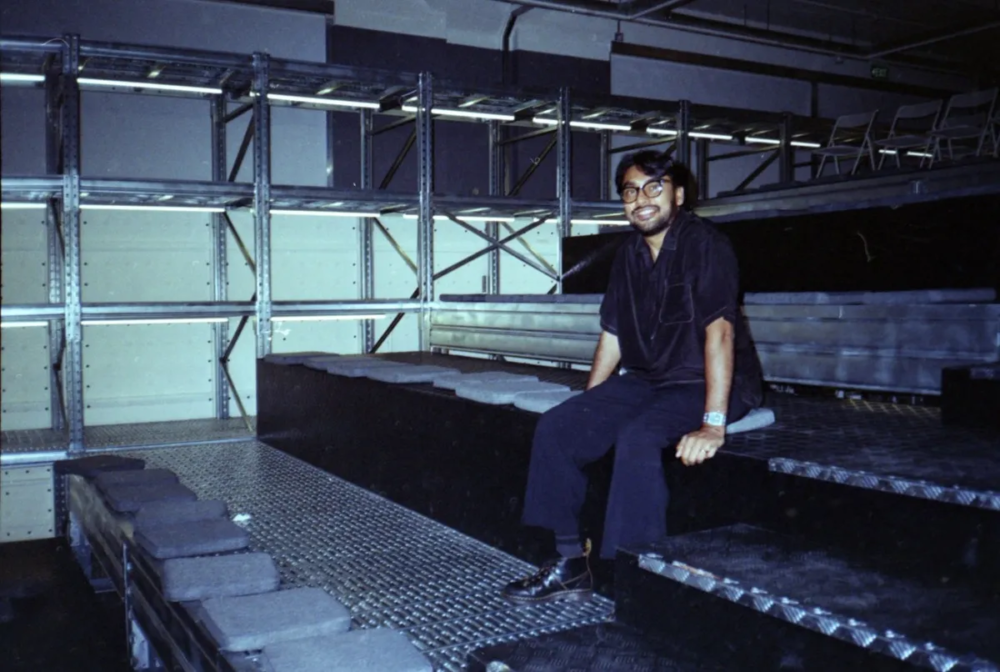
The meaning of lingerie in shaping female identity
From tights and bras to swimsuits and closets: lingerie as a lens to understand female identity, memory, whiteness, and the rituals passed down through generations. A performance by Charlotte Fourneuf-Niel
As Clean as Possible: a performance by Charlotte Fourneuf-Niel for Rita Intimates where underwear becomes memory, ritual, and storytelling
As Clean as Possible is a site-specific performance created for Rita Intimates, a pop-up store initiative by Valentine Cascailh. Through the narrative, each piece of lingerie—a corset, stockings, bra, panties, or thong—resurfaces as a vessel of memory. The garments speak to what lingerie does to our bodies, and how, through it, we shape our identities. Performer Charlotte Fourneuf-Niel wrote the following texts – fragments from those read aloud to the audience during the performance.
Tights: inherited stockings and the memory of my grandmother’s rituals
This summer we celebrated the anniversary of my grandmother’s death. It has been 16 years since she passed away. She had worn heels and stockings all her life. She moved to Paris at the age of 20, worked as a waitress in bars and restaurants, and later ran a Café de la Poste with my grandfather, whom she had met at a dance. She always bought dozens of pairs of underwear in advance, which she kept in their packaging. Stockings, tights, panties—flesh-colored and sheer—sometimes waited patiently in her closet for years. “You never know,” she would say, “if there might be an emergency.”
As a child, I often grew exasperated and mocked this attention, this fear, this urgent necessity. At what point does it become urgent to own 30-denier flesh-colored tights? After her death, it was time to tidy up, sort through, and rediscover her belongings, her memories, and her regrets. In her wallet, I found a note tucked behind her old paper ID card: detailed directions on how to get to Le Bon Marché by metro. In her neat, schoolgirl handwriting, she had written out four different routes—sometimes switching between lines, sometimes between transfer stations.
In her untouched closet remained her collection of tights, preserved for a lifetime. Now she was gone, and her tights would have to live without her. It was summer. I went to see her at the cemetery, where she rests just a 10-minute walk from the café where she had worked and lived for 50 years. I brought a pair of Dim tights with me; I thought they might come in handy up there, just in case.
Bra: the first bra and how lingerie shapes adolescent female identity
I remember my first bra. It was blue and white, bought in a seaside boutique while on vacation. For a long time, it was the only bra I owned—my first experience with lingerie.
The first time I wore it was on a school day. I had tried to hide the straps under my top, but they were still visible to Mélanie and Irina, who quickly asked why I was wearing a bra that day. I told them I’d had a doctor’s appointment that morning, and that my mother had said from now on I should wear it because it was better that way.
The afternoon before my appointment, I had PE class. We changed in the girls’ locker room, my locker right next to Mélanie and Irina’s. I was listening to their conversation: Mélanie was complaining about Célia, their friend from another fifth-grade class. Célia, it seemed, was always asking for help fastening her bra before and after gymnastics. At home, it was her mother who usually did it for her. Mélanie and Irina were annoyed by this, insisting that if you thought you were old enough to wear a bra, you had to be able to fasten and unfasten it yourself; otherwise, you might as well go back to the brassiere.
Then they both turned toward me, watching as I searched through my things for the talisman of 12-year-old girls. I slipped it on, fastening the little object alone, determined. When I finally turned around, the locker room broke into applause.
Swimsuit: whiteness, colonial heritage, and the performance of femininity
In 1989, a book was published: Black as Coffee, White as the Moon (Noire comme le café, blanc comme la lune, Pili Mandelbaum, 1989). It was a book that traveled with me on Sundays at home—between my bed, the carpet, the bookshelf, and the windowsill.
In 2013, before spending the summer in Diamant, in the north of Martinique with my paternal family, I picked up a white two-piece swimsuit at the shopping center. It was far too white, and Lisa had warned me never to buy it: in the water, everything would show. She hadn’t accounted for the ingenuity—and the opacity—of the lining. Halfway through the summer, freckles had spread across my nose, though no tan was in sight. Meanwhile, the swimsuit, by some magic, had grown even whiter. My aunt kept saying, “There’s no detergent like it—every wash comes out immaculately white.” “White as snow,” another used to say. A whiteness that burns.
Weeks after I arrived in Martinique, I was in the car with my father. He said the Martinicans were like that. That to be as clean as possible meant being cleaner than white people. That the people of Fort-de-France prized immaculate laundry.
Frantz Fanon writes: “I marry white culture, white beauty, white whiteness. When my restless hands caress those white breasts, they grasp white civilization and dignity and make them mine” (Black Skin, White Masks, 1952).
By the end of the trip, I had finally turned brown, and my father had turned black. “Black as the moon,” said the boatman who took us from François to the Joséphine Baths, in the shade of the mangroves. I asked him why. “Because the moon is blue,” he replied.
Closet: white dresses, laundry, and the legacy of internalized racism
One day, my aunt showed me her mother’s closet. It was filled with white dresses and white underwear. My paternal grandmother did her laundry twice a day; she wore only immaculate clothes. Everything in her behavior was directed toward conforming to white standards, especially when it came to cleanliness. She was obsessed with soap, with whiteness, with freshly bleached linens. Her aspiration to whiteness seeped into everything.
If cleanliness, bleaching, and purification are the consequences of internalized racism and the alienation of Black people in our societies, then my grandmother’s wardrobe had absorbed an entire world. She was my father’s mother; she had lived half her life in Fort-de-France, where he was born. I never resembled her—neither in voice, nor in hair, nor in skin. My mother, born in Paris and never leaving her side, had red hair and had a child with my father.
My father was terribly Black—too Black, people said, to be Caribbean—and in the eyes of others I became the pale-skinned child he had fathered. When he introduced my brother and me—my brother taller, darker, curlier—he would say: “Wait, the next one is even lighter.”
We once told my father I would change, that I would not stay white. I adapted instead, to the world I was meant to live in—the one that already excluded him. […]
In the end, I had carved out my own identity. My grandmother’s closet, with its piles of white, was a small player compared to me.
Charlotte Fourneuf-Niel
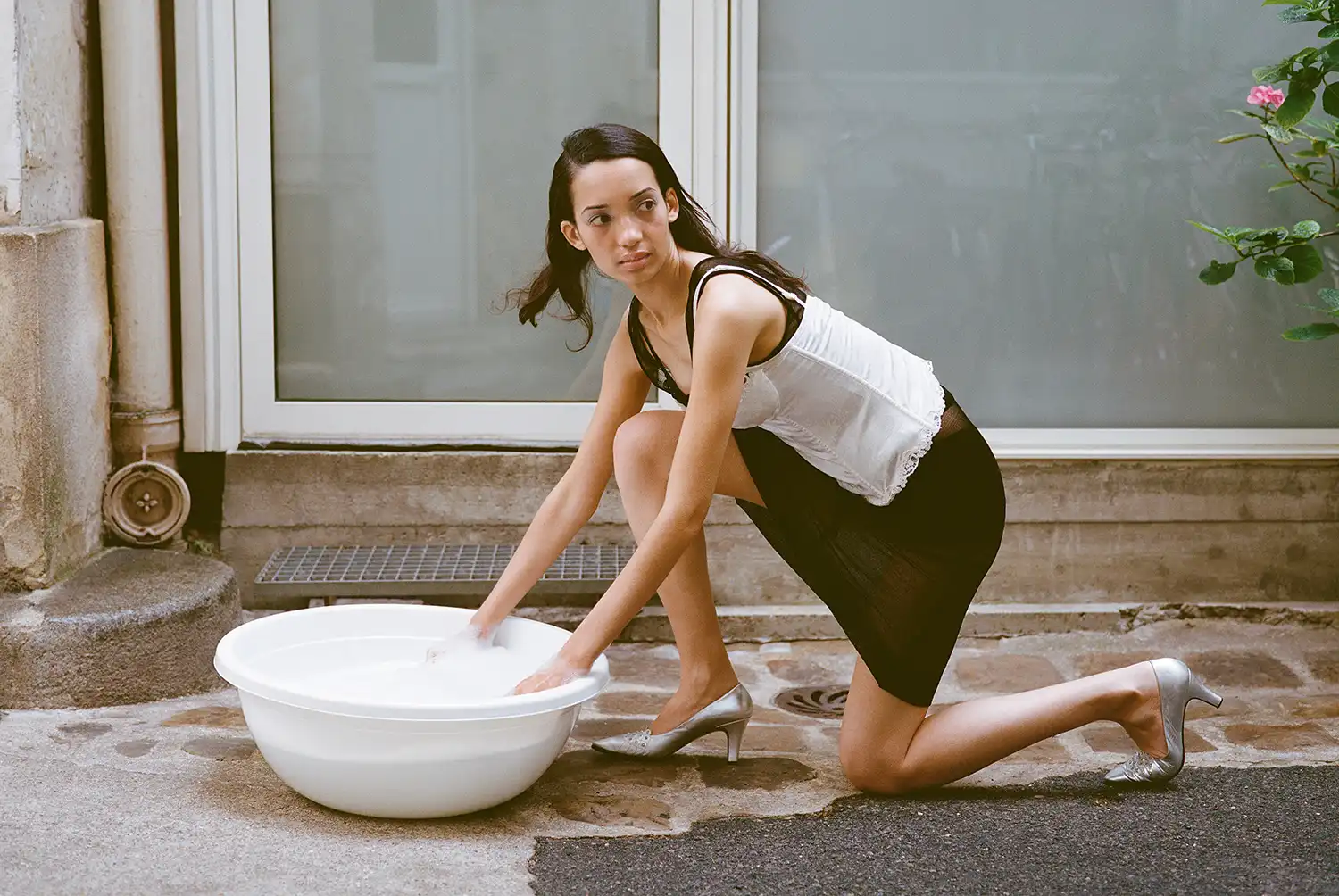
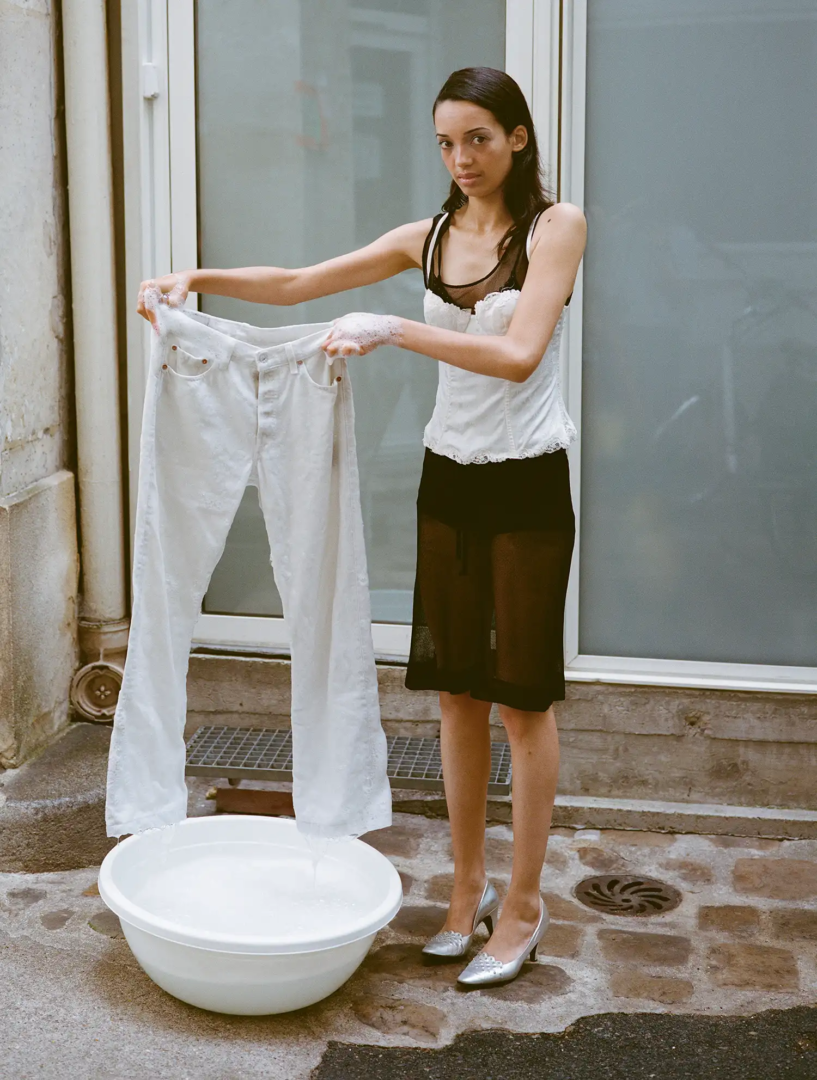
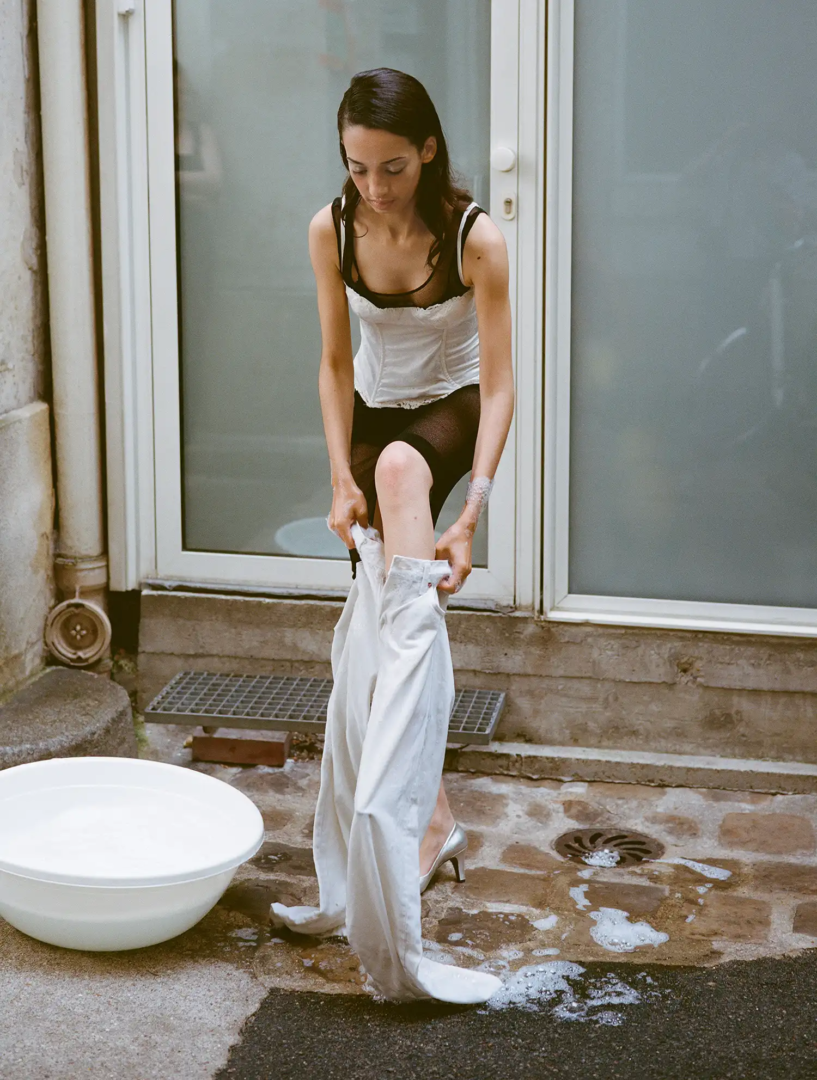
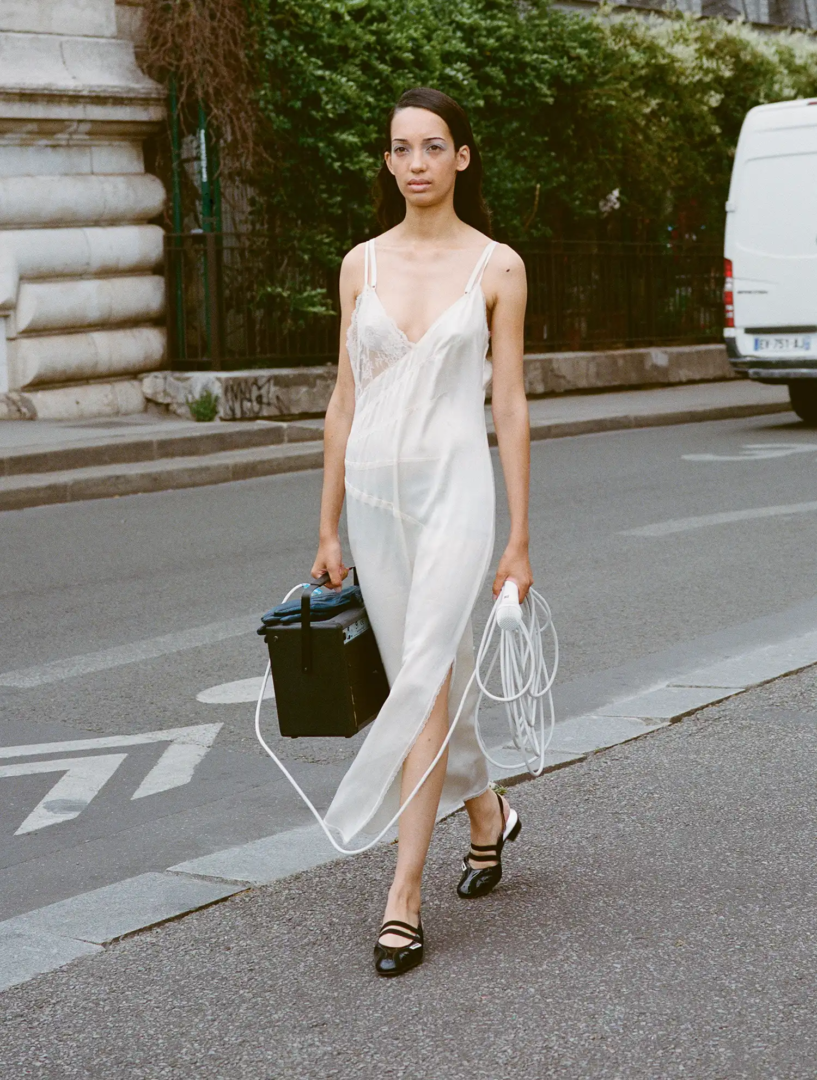

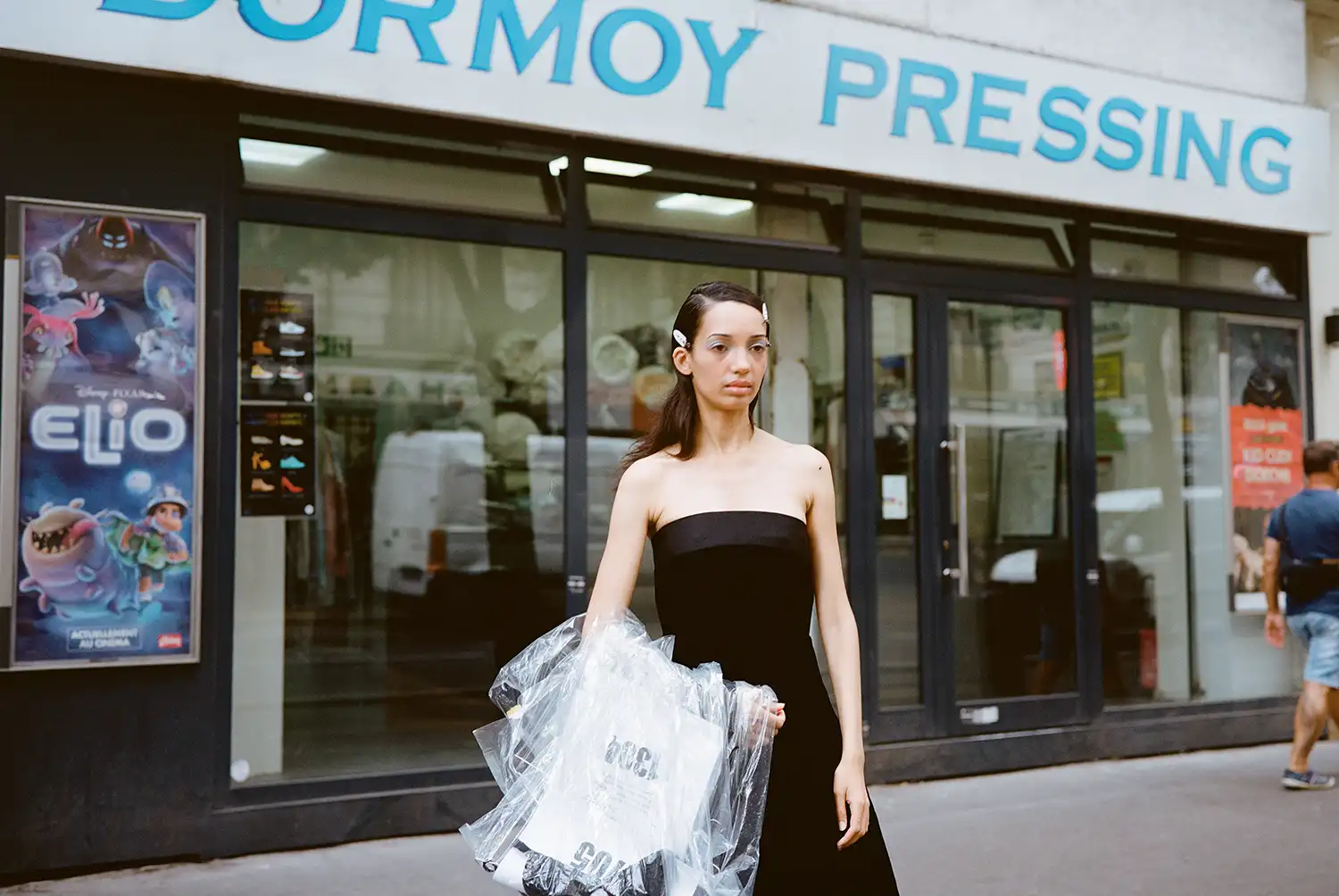
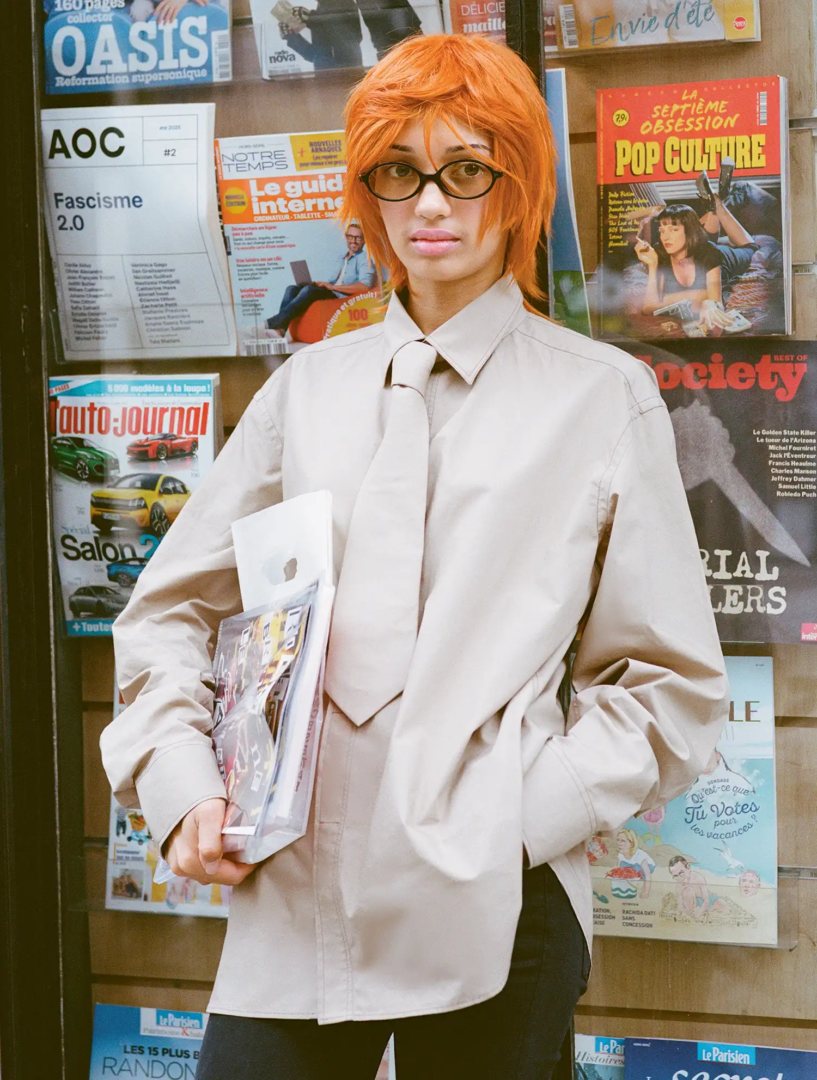
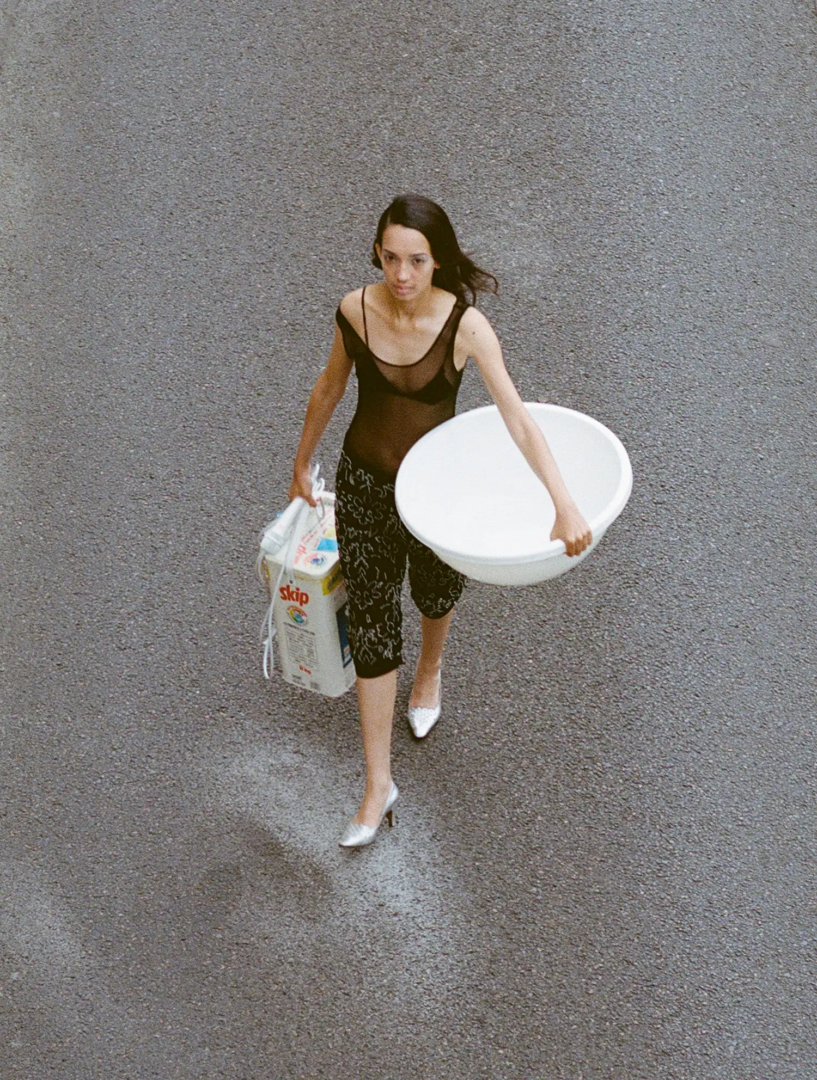

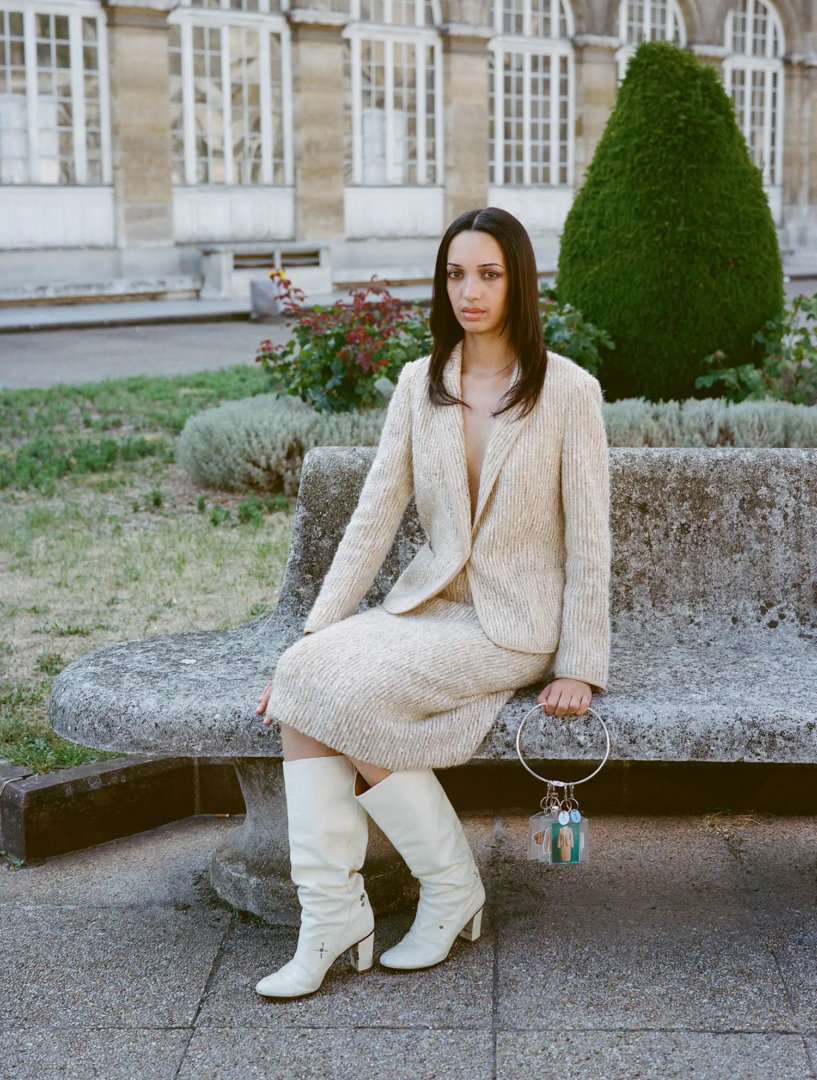
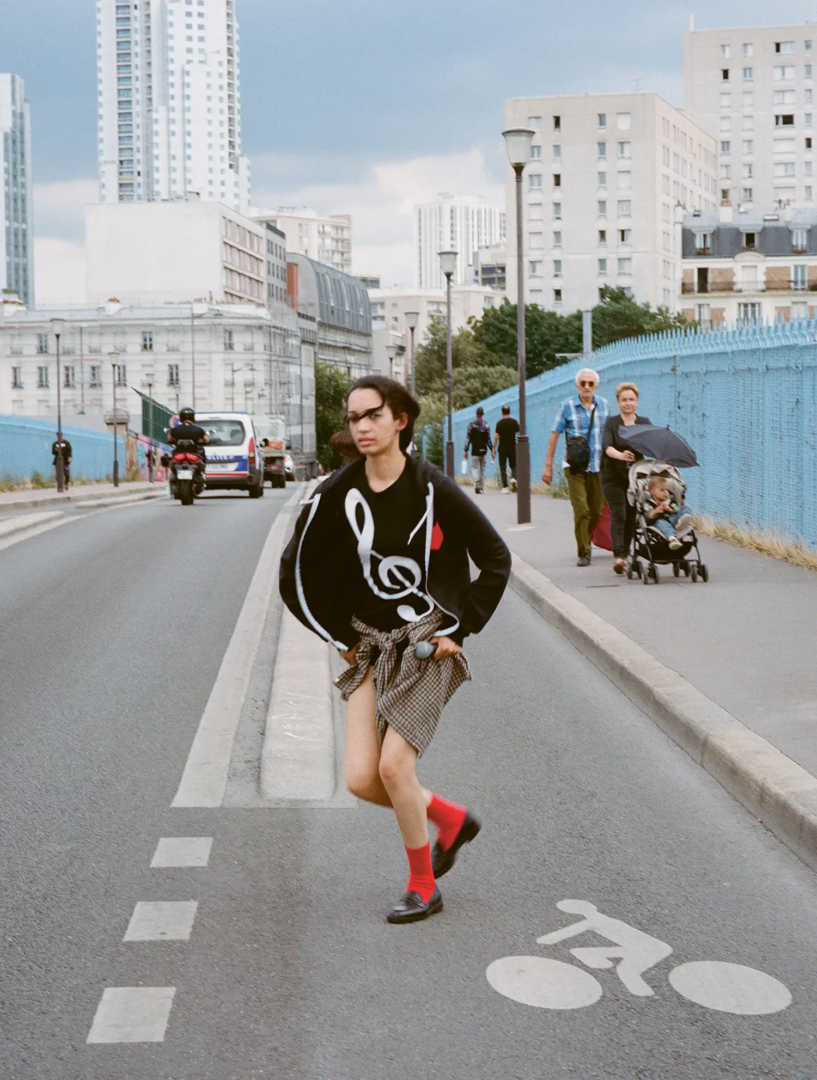
TEAM
Photography Albane Durand-Viel, styling Héloïse Riffler, hair Hiro Yafune, makeup Chloé Kozak, performer talent Charlotte Fourneuf-Niel

